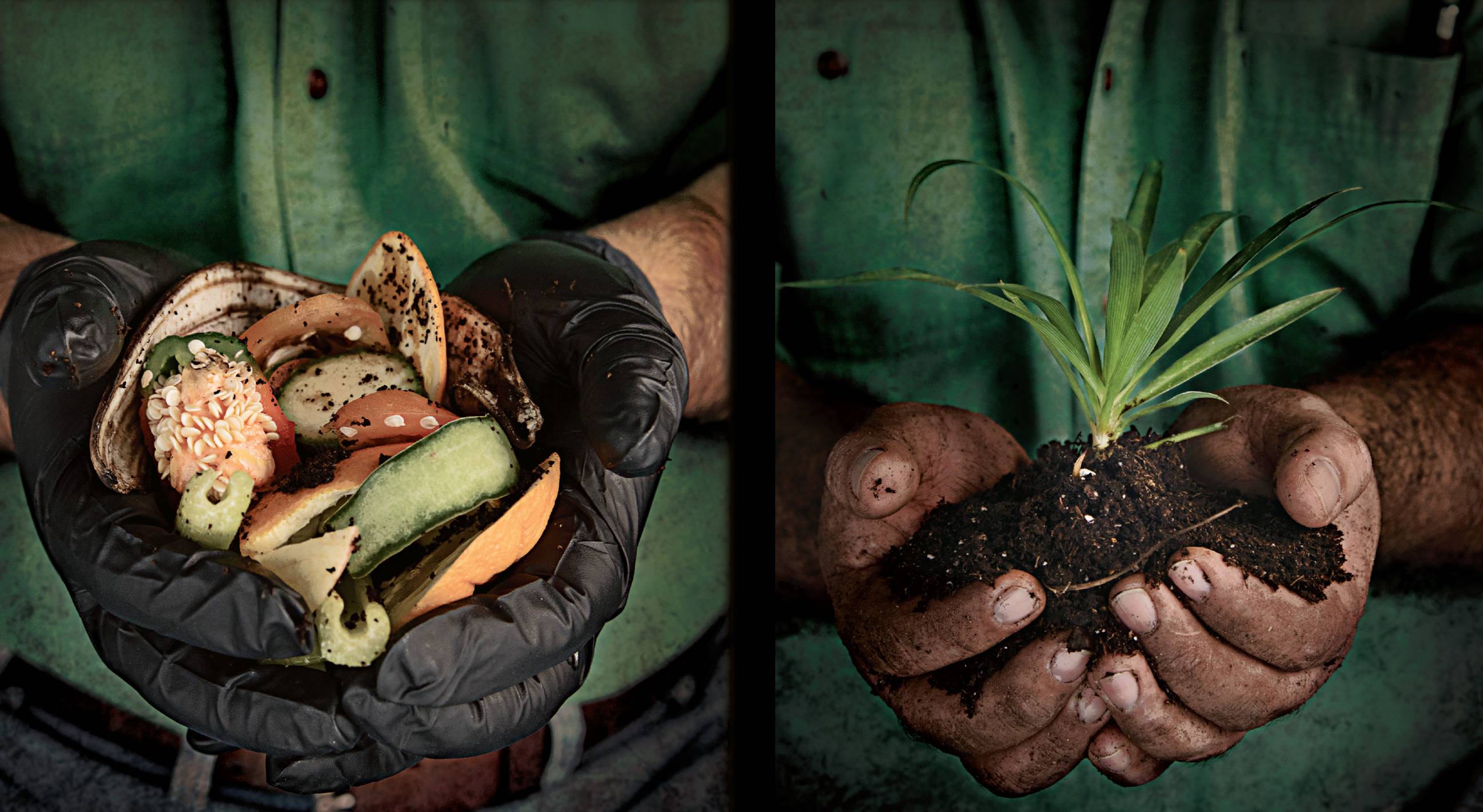
Bobcat Blend
by Tracy Hobson Lehmann
Student-run project turns food waste into good garden compost
Graduate student Kevin Walsh maneuvers a brimming 60-gallon trash bin across a dining hall loading dock toward a university pickup. As the container jostles over a bump, an unappetizing stench of discarded food wafts across the concrete.
Walsh continues unfazed, even though his shorts intercept part of the refuse. He methodically scatters dirt to absorb the splat and secures the bin in the truck before sweeping up and continuing his route.
It’s just another afternoon at work for Walsh, the graduate-student manager of Bobcat Blend, the Texas State University composting program. The grant-funded project turns food waste into compost that’s used in Agriculture Department gardens, greenhouses, and sold to the public.
Bobcat Blend began in 2008 as part of a university initiative to cut waste-disposal expenses, says Dr. Tina Marie Cade, the horticulture professor who oversees the student-run effort. It succeeded in diverting waste; crews collected almost 384 tons of cafeteria scraps from academic years 2010 to 2014.
The educational roots of Bobcat Blend stretch into the community. Student volunteers with the offshoot Bobcat Blend Club collect waste such as leaves, Christmas trees and pumpkins from the community to mix in with food waste, and they lead composting classes.
A grant of nearly $500,000 from the Texas Commission on Environmental Quality kick-started the program and funded construction of a five-acre waste-disposal site, a fully functional municipal solid waste facility at Texas State’s Muller Farm, located off Center Point Road in San Marcos. Bobcat Blend stays in operation through the Environmental Service fee, grants from state and federal agencies, and other sources such as corporate sponsors State Farm Insurance and Patagonia clothing company.
Backyard gardeners know the value of converting kitchen castoffs into plant food. Now, large-scale composting is a growing focus of the horticulture, agriculture and waste-management industries, Walsh says.
Tossed-out edibles are the biggest single component in municipal landfills, amounting to 133 billion pounds a year, according to the U.S. Department of Agriculture. At Texas State, Bobcat Blend diverts on average 10,000 pounds of food waste a week from the waste stream, says Walsh, who is pursuing a master’s degree in agricultural education.
“A lot of people are talking about (how to use) expired food or uneaten food from restaurants,” he says. “When there are no more mouths to give the food to, we give it to the mouths of microbes.”
Converting discarded food to compost is dirty work. Walsh and a team of about six paid students take turns on daily runs to Harris, Commons and Jones dining facilities. At each, they retrieve a bin or two of food waste and transfer it to temporary storage at the campus ag building.
At the farm, the students might find themselves knee-deep in muck as they pluck out broken plates, flatware, drinking straws, and other noncompostables. They also blend in other ingredients — sometimes with pitchforks and sometimes with a skid-steer loader — to create piles about 5 feet high.
Bobcat Blend follows the standard compost recipe of one part nitrogen — green material such as vegetables, manure or lawn clippings — to three parts carbon. That comes from wood chips, sawdust, shredded leaves, and even pizza boxes.
The final ingredient is moisture, which can be drawn from rain, a water hose or, in some cases, water hyacinth and hydrilla pulled from the San Marcos River. The nuisance aquatic plants have fueled research projects for Cade and students looking at invasive species management. A current study focuses on composting seaweed. “The value of the program goes way beyond just processing food waste,” Cade says.
The educational roots of Bobcat Blend stretch into the community. Student volunteers with the offshoot Bobcat Blend Club collect waste such as leaves, Christmas trees and pumpkins from the community to mix in with food waste, and they lead composting classes. In 2015, Bobcat Blend was selected by the United States Composting Council as Compost Program of the Year. “They’re helping with this program that offsets food waste, but it’s also building their resume,” Cade says.
They also teach vermicomposting, a recycling method that employs earthworms to devour food waste. The wriggling invertebrates leave behind castings — a polite word for worm poop — even richer in nutrients than basic compost.
On the financial side, using the DIY compost instead of purchased products for Agriculture Department gardens and greenhouses whittles university expenses, Cade notes. Bobcat Blend also is sold at farmers markets in San Marcos.
Like the circle of life, the food that starts out in student dining halls ends up as compost that produces more food and vegetation for the Texas State campus. It’s a win-win for everyone. ✪